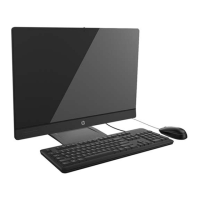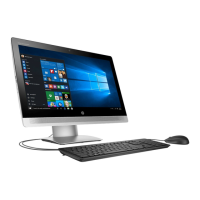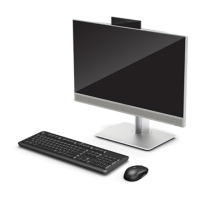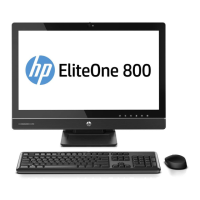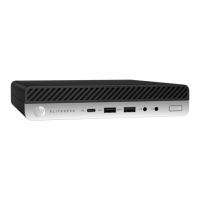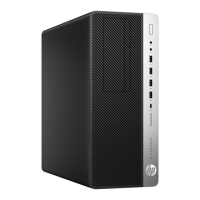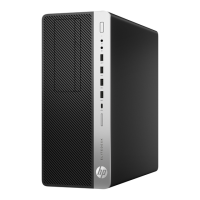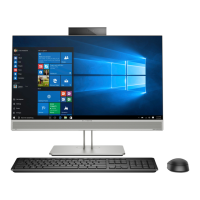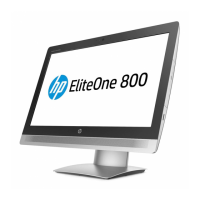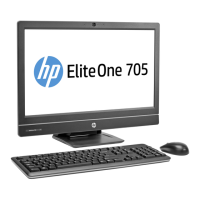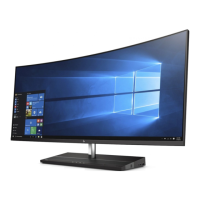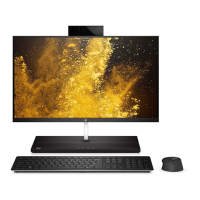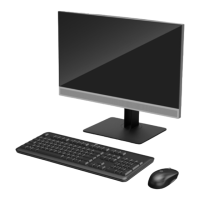
Do you have a question about the HP EliteOne 800 G3 and is the answer not in the manual?
| Tcase | 71 °C |
|---|---|
| Bus type | DMI3 |
| Stepping | R0 |
| Processor code | SR2BX |
| Processor cache | 6 MB |
| Processor cores | 4 |
| Processor model | i5-6500 |
| System bus rate | 8 GT/s |
| Processor family | Intel® Core™ i5 |
| Processor series | Intel Core i5-6500 Desktop series |
| Processor socket | LGA 1151 (Socket H4) |
| Processor codename | Skylake |
| Processor frequency | 3.2 GHz |
| Processor cache type | Smart Cache |
| Processor lithography | 14 nm |
| Processor manufacturer | Intel |
| Conflict-Free processor | Yes |
| Processor front side bus | - MHz |
| PCI Express slots version | 3.0 |
| Processor boost frequency | 3.6 GHz |
| Processor operating modes | 64-bit |
| PCI Express configurations | 1x16, 2x8, 1x8+2x4 |
| Thermal Design Power (TDP) | 65 W |
| Maximum number of PCI Express lanes | 16 |
| Memory types supported by processor | DDR3L-SDRAM, DDR4-SDRAM |
| Memory voltage supported by processor | 1.35 V |
| Memory clock speeds supported by processor | 2133, 1333, 1600, 1866 MHz |
| Memory bandwidth supported by processor (max) | 34.1 GB/s |
| Maximum internal memory supported by processor | 64 GB |
| Discrete graphics card | No |
| On-board graphics card ID | 1912 |
| Discrete graphics card model | Not available |
| On-board graphics card model | Intel® HD Graphics 530 |
| Maximum on-board graphics card memory | 1.74 GB |
| On-board graphics card OpenGL version | 4.4 |
| On-board graphics card base frequency | 350 MHz |
| On-board graphics card DirectX version | 12.0 |
| On-board graphics card dynamic frequency (max) | 1050 MHz |
| Number of displays supported (on-board graphics) | 3 |
| Color gamut | 72 % |
| RGB color space | NTSC |
| Display diagonal | 23.8 \ |
| Native aspect ratio | 16:9 |
| Product type | All-in-One PC |
| Motherboard chipset | Intel® Q270 |
| Memory slots | 2 |
| Internal memory | 8 GB |
| Memory slots type | SO-DIMM |
| Memory clock speed | 2400 MHz |
| Internal memory type | DDR4-SDRAM |
| Maximum internal memory | 32 GB |
| Memory layout (slots x size) | 1 x 8 GB |
| SSD capacity | 256 GB |
| SSD interface | PCI Express |
| Storage media | SSD |
| Optical drive type | DVD-RW |
| Card reader integrated | - |
| Number of storage drives installed | 1 |
| USB 2.0 ports quantity | USB 2.0 ports have a data transmission speed of 480 Mbps, and are backwards compatible with USB 1.1 ports. You can connect all kinds of peripheral devices to them. |
| USB 3.2 Gen 1 (3.1 Gen 1) Type-A ports quantity | 6 |
| USB 3.2 Gen 2 (3.1 Gen 2) Type-A ports quantity | 0 |
| Product color | Black, Silver |
| Country of origin | China |
| Antenna type | 2x2 |
| Wi-Fi standards | Wi-Fi 5 (802.11ac) |
| Ethernet LAN data rates | 10, 100, 1000 Mbit/s |
| AC adapter power | 180 W |
| Recovery operating system | Windows 10 Pro |
| Operating system installed | Windows 7 Professional |
| Scalability | 1S |
| Processor ARK ID | 88184 |
| Processor package size | 37.5 x 37.5 mm |
| Supported instruction sets | SSE4.2, AVX 2.0, SSE4.1 |
| Thermal solution specification | PCG 2015C |
| Intel Identity Protection Technology version | 1.00 |
| Depth (with stand) | 53.8 mm |
|---|---|
| Width (with stand) | 539.6 mm |
| Height (with stand) | 314.8 mm |
| Weight (with stand) | 6030 g |
Lists and illustrates the main system components of the computer.
Lists compatible processors and memory modules for the computer.
Explains ESD risks, grounding methods, and materials to prevent component damage.
Lists essential tools, software, and handling considerations for computer disassembly.
Outlines essential steps to take before disassembling the computer to avoid injury or damage.
Provides step-by-step instructions for removing the rear port cover.
Details the steps for removing the main rear access panel to access internal components.
Covers removal of optical, hard drive, and M.2 solid-state drives.
Provides instructions for removing and installing memory modules.
Provides instructions and safety warnings for replacing the computer's battery.
Provides instructions for removing the heat sink for UMA and discrete graphics models.
Provides instructions for removing and replacing the computer's power supply.
Provides detailed instructions for removing the system board.
Provides step-by-step instructions for removing the display panel.
Describes the functions and capabilities of the Computer Setup utility.
Details the options and settings available within the Computer Setup—Main menu.
Details the options and settings available within the Computer Setup—Security menu.
Details the options and settings available within the Computer Setup—Advanced menu.
Explains how to use HP PC Hardware Diagnostics for hardware testing.
Provides instructions for downloading the HP PC Hardware Diagnostics tool to a USB drive.
Offers steps to isolate problems before contacting technical support.
Addresses common computer problems and their solutions.
Lists POST errors with numeric codes, descriptions, and recommended actions.
Explains how to interpret diagnostic LEDs and audible codes during system startup.
